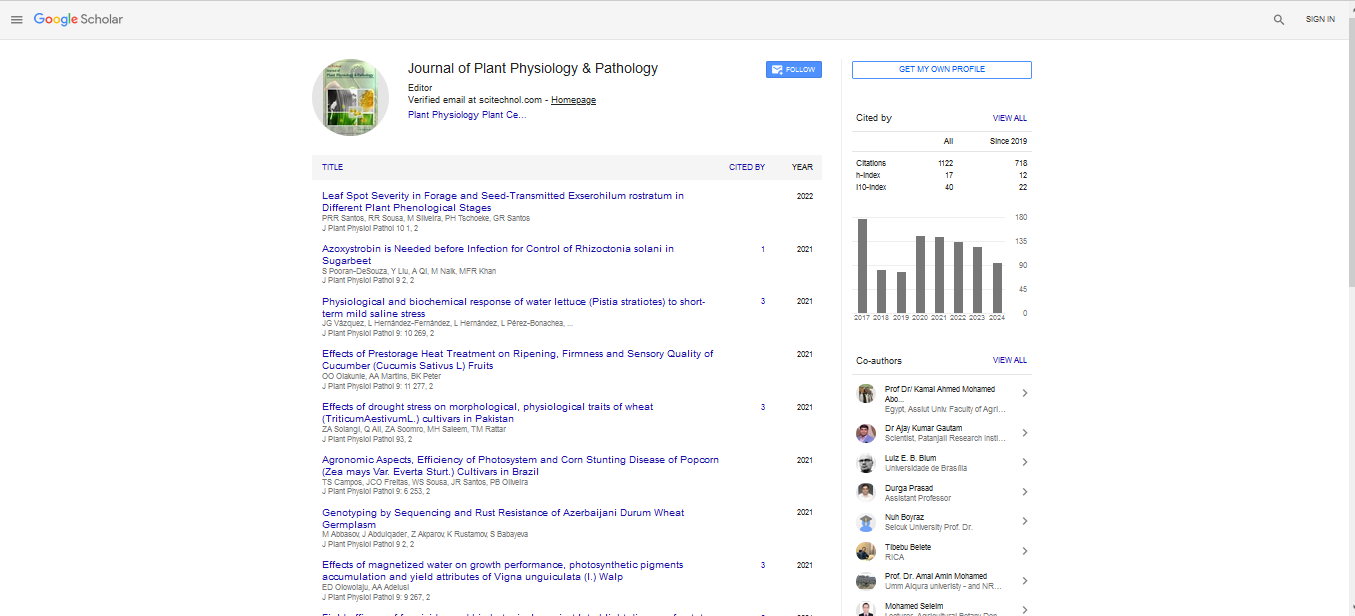Research Article, J Plant Physiol Pathol Vol: 6 Issue: 2
Efficacy of BAU-Biofungicide, Chemical Fungicides and Plant Extracts on Rice (Oryza sativa L.) Diseases and Yield
Hyat Mahmud1* and Ismail Hossain2
1Department of Agricultural Extension, Kushtia
2Department of Plant Pathology, Bangladesh Agricultural University, Mymensingh, Bangladesh
*Corresponding Author : Hyat Mahmud
Additional Deputy Director (Crop), Department of Agricultural Extension, Kushtia
Tel: +8801727182615
E-mail: mhyat81@gmail.com
Received: February 19, 2018 Accepted: April 11, 2018 Published: April 24, 2018
Citation: Mahmud H, Hossain I (2018) Efficacy of BAU-Biofungicide, Chemical Fungicides and Plant Extracts on Rice (Oryza Sativa L.) Diseases and Yield. J Plant Physiol Pathol 6:2. doi: 10.4172/2329-955X.1000181
Abstract
Extract of garlic (Allium sativum L.), Neem (Azadirachta indica L.); BAU-Biofungicide (Trichoderma based preparation) and Bavistin DF (Carbandazim) and Potent 250 EC (Propiconazole) were tested in laboratory and field conditions for eco-friendly management of diseases of rice (Oryza sativa, L.) cv BRRI dhan28. BAUBiofungicide (2%) was found to have profound effect in inhibiting the mycelial growth of Bipolaris oryzae (brown spot), Cercospora oryzae (narrow brown leaf spot) and Rhizoctonia solani (sheath blight) in vitro and marked reduction of disease incidence of brown spot, narrow brown leaf spot and sheath blight in the field. It was noted that significantly low incidence of narrow brown leaf spot and sheath blight disease was observed in plots sprayed with Carbendazim (0.1%) in the field as well as mycelial growth inhibition of Cercospora oryzae and Rhizoctonia solani was found in Carbendazim (0.1%) under laboratory condition. Highest (20.20%) grain yield was increased in Propiconazole (0.1%), while (17.84%) higher increase grain was obtained with BAU-Biofungicide (3%). No statistical significant difference was observed between yield of BAU-Biofungicide and Propiconazole. Most of the detected seed borne pathogens were controlled by BAU-Biofungicide and Propiconazole. Maximum germination (%) was observed over control when seeds were treated with BAU-Biofungicide (2%). BAUBiofungicide (2%) exhibited (40.45%) higher increase in vigour index over control. Results indicated that the greatest antagonistic effect of BAU-Biofungicide was found in reducing disease incidence and increased grain yield as an alternative option of synthetic fungicide.
 Spanish
Spanish  Chinese
Chinese  Russian
Russian  German
German  French
French  Japanese
Japanese  Portuguese
Portuguese  Hindi
Hindi 
